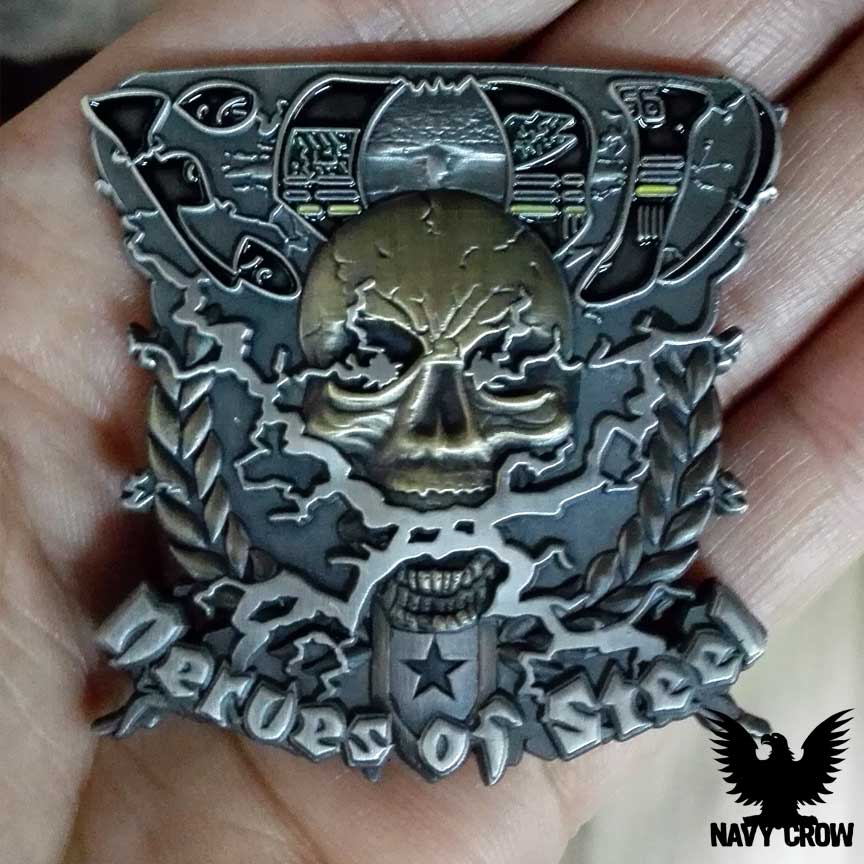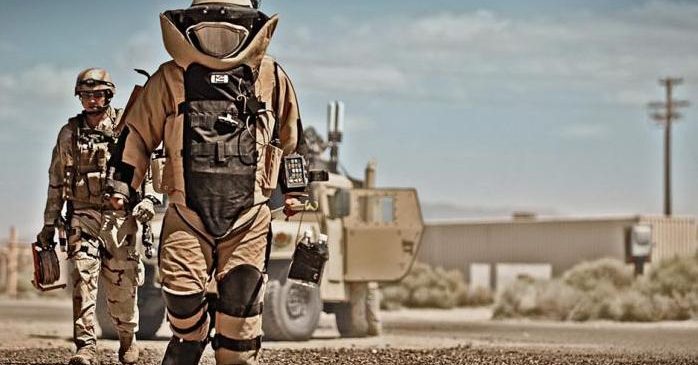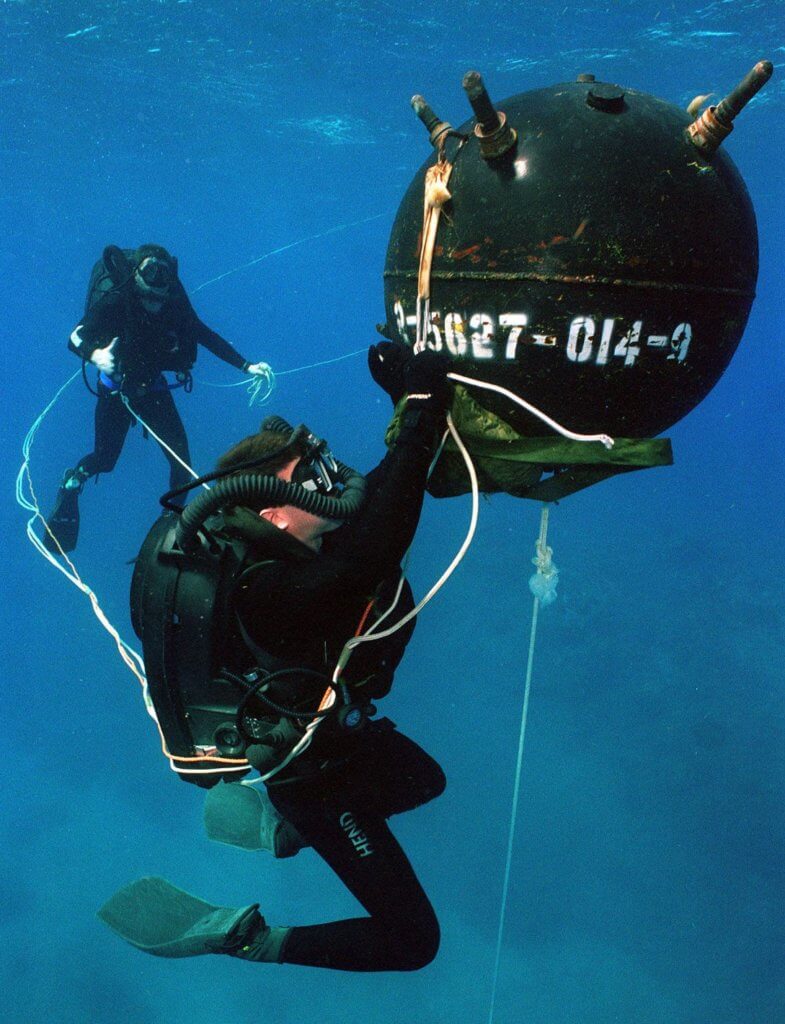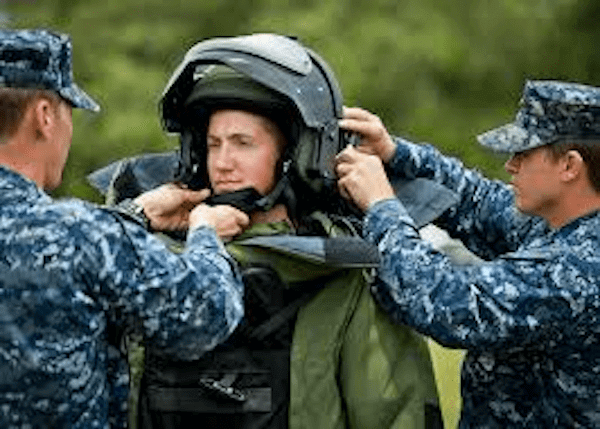EOD Explosive Ordnance Disposal
US Navy EOD Techs are responsible for rendering safe all types of ordnance, including improvised, chemical, biological, and nuclear. They perform land and underwater location, identification, render-safe, and recovery/disposal of foreign and domestic ordnance. They conduct demolition of hazardous munitions, using various techniques.
Nerves of Steel…
US Navy EOD
The Sailors that make up Navy EOD are a most unique brand, they must endure some of the most physically challenging training within the entire DoD. To even qualify to attend EOD training whether you’re a seasoned Sailor from the Fleet or enlisted with an EOD contract you must first pass a Physical Screening Test or PST. It is advised that you score well above the minimum requirements for the Navy to even look at your request, because in war “minimum standards” just don’t cut it!
Training Pipeline
The Navy EOD candidates first must attend a Pre-Dive School in Great Lakes, IL for 3 weeks upon successful completion the candidates move onto 9 weeks of Navy Dive School in Panama City, FL. This is a unique aspect of Navy EOD that everyone must be a Diver as the biggest threat to the Fleet are the sea mines so you must be comfortable in the water…after all you joined the Navy didn’t you? If you can complete this phase then you are rewarded with a 42 week Joint Service school at Eglin AFB, FL where you will train alongside Army, Air Force, and Marines all aspiring for the “Master Blaster”. Then if you’re still standing count yourself lucky as you get to go to Army Jump School next (not exactly rocket science here people), and further fun training learning basic combat skills and first aid in sunny scenic Coronado Island in San Diego.
As a Navy EOD Technician, you will have many far-ranging duties that can cast you on missions across the world. Your duties may require you to:
- Detonate and demolish hazardous munitions, pyrotechnics and outdated explosives
- Work with cutting-edge technology to remotely disable unsafe ordnance
- Perform parachute or helicopter insertion operations
- Support law enforcement agencies
- Clear waterways of mines in support of the Fleet
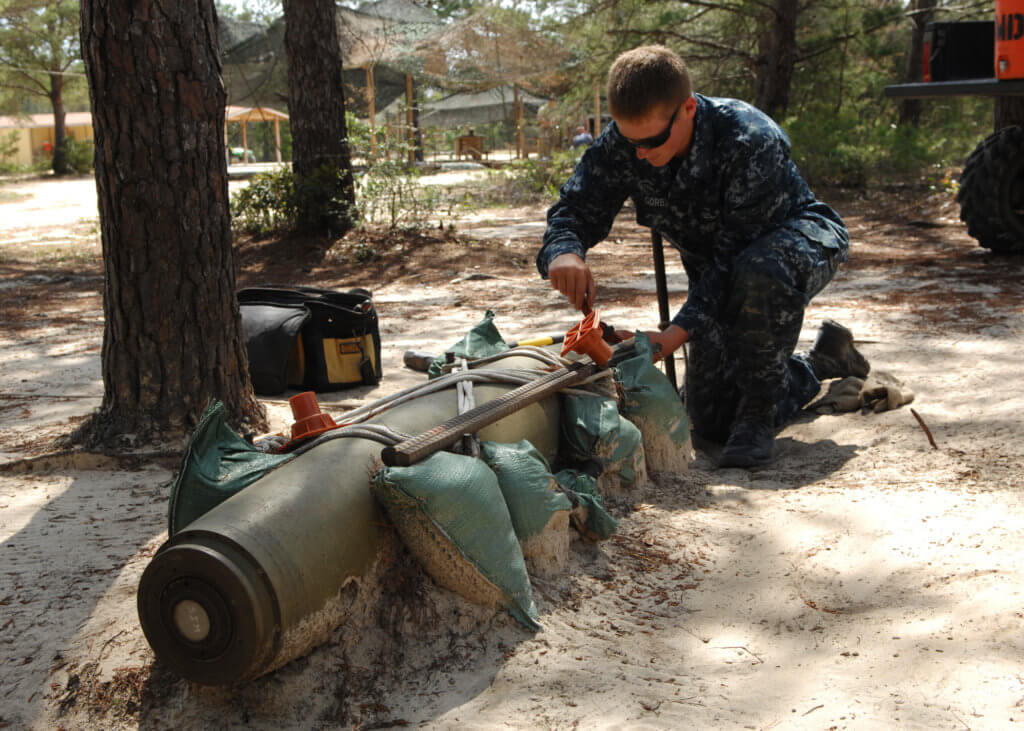
120322-N-DA827-017
EGLIN AIR FORCE BASE, Fla. (March 22, 2012) Seaman Apprentice Aaron Gorby, a student at Naval Explosive Ordnance Disposal School, tapes a fuse prior to removal during a training scenario in the Tools and Methods division. The school provides high-risk, specialized, basic and advanced EOD training to more than 2,200 U.S. and partner nation military and selected U.S. government personnel each year. (U.S. Navy photo by Ensign Elizabeth Allen/Released)
Your unique skills and knowledge will add to the strengths of other Special Operations units, as well as your own. As an EOD Technician, you may also:
- Locate, identify, neutralize, recover and dispose of various ordnances, such as sea mines, torpedoes and depth charges
- Support other Special Operations/Special Warfare units, such as Navy SEALs, Army Special Forces and Marine Expeditionary Units
- Help the U.S. Secret Service and the U.S. Department of State to protect the President, Vice President and other officials and dignitaries
- Assist with security at large international events, such as sporting events or world summits
The design features the EOD Badge or “Crab”, with the lightning bolts ejecting from a skull’s mouth representative of the ever constant risk of death that these professionals must undertake daily. The skull is colored in antique gold, with harrowing rich silver lightning bolts intercepting the phrase “Nerves of Steel”. Simply put this job is not for the faint of heart, this ain’t Hollywood and we aren’t watching the Hurt Locker!
- The Wreath Symbolic of the achievements and laurels gained minimizing accident potentials through the ingenuity and devotion to duty of its members. It is in memory of those EOD personnel who gave their lives.
- The Bomb Copied from the design of the World War II Bomb Disposal Badge, the bomb represents the historic and major objective of the EOD attack, the unexplored bomb.
- Lightning Bolts Symbolize the potential destructive power of the bomb and the courage and professionalism of EOD personnel in their endeavors to reduce hazards as well as to render explosive ordnance harmless.
- The Shield Represents the EOD mission – o prevent a detonation and protect the surrounding area and property to the utmost.
Above the Death’s Head find the name EOD written in a deep black the color of the night sky when EOD Techs must operate to clear the path for the Fleet.




